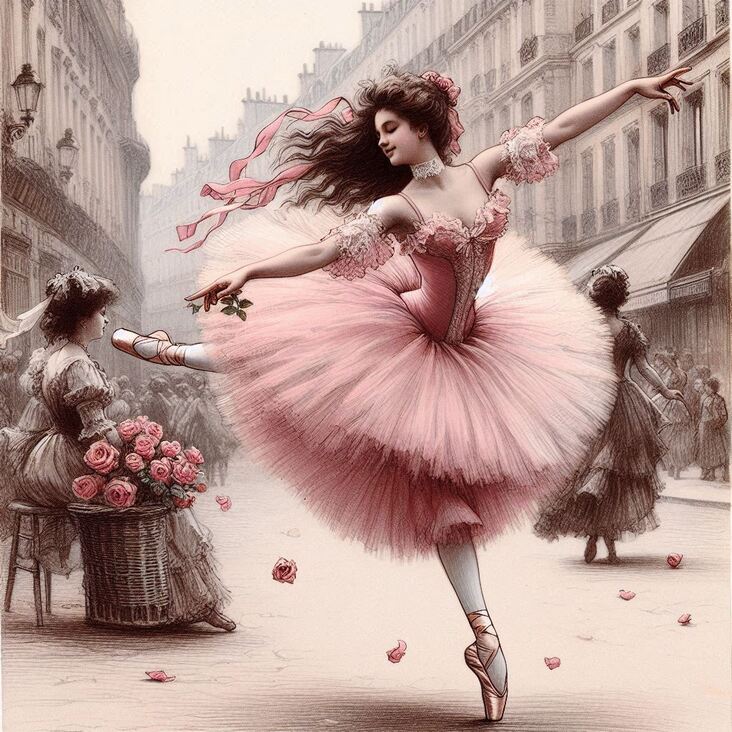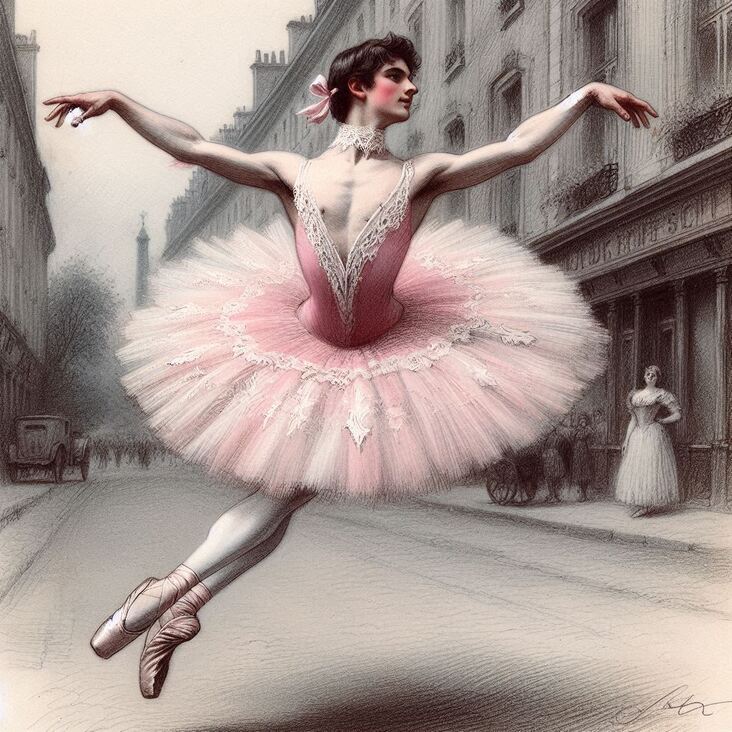
Hello my darlings! Welcome back to another glorious #TutuTuesday, a day dedicated to celebrating the beautiful world of tutus! This is post number 1782 from your very own time-travelling tutu enthusiast, Emma. Today, I've whizzed back in time to a very special date - the 20th of February 1866. And trust me, my dears, this date is teeming with tutu-tastic happenings!
Before we dive into the history, allow me to give you a little peek into my latest time travel escapades. This time, I hopped onto a lovely steam train that took me straight to the heart of Paris. Paris! My goodness, it's a city of dreams! I felt like I had stepped into a fashion magazine come to life. The boulevards are lined with chic boutiques, and I practically squealed with delight when I saw all the gorgeous fabrics! Silk, velvet, lace, oh my! You wouldn't believe the abundance of pink, my absolute favourite colour! And just you wait until you see the tutus they're making here - oh, the artistry!
Speaking of artistry, let's talk tutus! Oh my darlings, I couldn't possibly skip this date in my Ballet Tutu History! 1866 is a pivotal year for the tutu as we know it. Imagine a tutu that wasn't just fluffy and airy - a tutu that was, dare I say it, structured and sleek! Can you believe it?
It all started with Marie Taglioni, a legendary ballerina, my dear. Now, Marie, with her stunning grace and effortless elegance, revolutionised the world of ballet with her performance in "La Sylphide" back in 1832. She wore a wispy, flowing, and gloriously airy tutu that captured the hearts of everyone who saw it! It was so iconic, so breathtaking, that it was named after her - the "Taglioni tutu." It became the standard for ballerinas for over three decades. A tutu made from multiple layers of delicate tulle with its graceful folds. Imagine dancing with the lightness and freedom it provides! It just inspires a sense of poetry in motion, don't you think?
Now, here comes the part that makes 1866 a really big deal for tutus! Enter the brilliant and oh-so-innovative Marius Petipa, the choreographer who had a knack for pushing boundaries and redefining how ballet was danced. He revolutionised tutus, too! Can you believe it, my dears? He introduced the "Classical tutu." The Classical tutu, made of silk and layered tulle, took the lightness and femininity of the Taglioni tutu to another level. This was the new must-have tutu! The Classical tutu was short, it fit tightly around the hips and extended into a bell-shaped skirt with graceful movement that danced with every step!
Think about it - how elegant, how feminine! Can you imagine waltzing around the stage in a Classical tutu, twirling and soaring with a joyful abandon? The Classical tutu wasn't just about form, my dears, it was about the way it danced on the body, the graceful swirls of silk and tulle as the ballerina spun across the stage. It’s absolutely mesmerizing! It makes the whole experience so captivating, I simply can't resist it!
You know what? Right here, on February 20th, 1866, a little further from Paris, in the heart of Russia, Marius Petipa is busy choreographing a grand ballet called “La Bayadère”. This production has a new and beautiful princess who is so full of energy and life. She needs the perfect tutu, right? This tutu needs to flow like water, it needs to shimmer like a precious jewel. This tutu has got to dance in such a graceful and breathtaking way that it mesmerizes the entire audience. You can see how Petipa would immediately use the new Classical Tutu, because he has such a good eye for a perfectly elegant look. This was definitely the right choice for “La Bayadère”. Now I need to plan a visit!
Well, my lovelies, that's a wrap for this #TutuTuesday. We have a lot more to learn about the enchanting world of ballet tutus, and we'll continue our journey next Tuesday, here on www.pink-tutu.com, to explore their story even more. And in the meantime, let’s not forget: wear your tutus with pride and joy, because they represent grace, elegance, and the love for the dance. Keep your tutus twirling, and I’ll see you next Tuesday!
Until next time, stay twirling!
Lots of love, Emma

